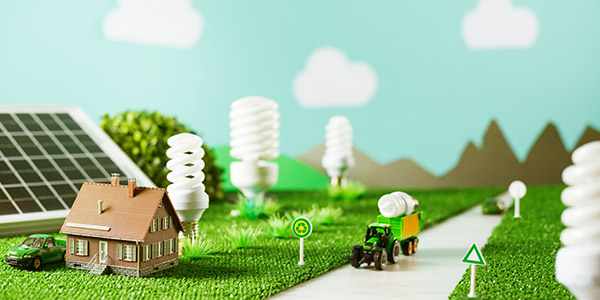Homeowners
Eco-Friendly Renovations That Will Save You Money and Improve Your Home
March 29, 2016
These days, home renovations that focus on "going green" are not focused on solely environmental benefits. There are a huge number of eco-friendly renovations that will also benefit you, the homeowner. When renovating, environmentally friendly choices can save you money, improve home durability, and also create a healthier environment for you and your family.
Even choosing to renovate rather than build an entirely new home is an environmentally sound decision, according to Better Homes and Gardens.1 Once you have made this decision and are determining what types of renovations to make, consider the following changes to keep your home as environmentally friendly as possible.
1. Eco-Friendly Insulation
Saving Advice warned homeowners that an attic that is not properly insulated could cause a home to lose a significant amount of energy through its roof. Even if your attic was well-insulated when you purchased your home, the insulation may have worn away. The standard, pink-colored insulation material contains many hazardous chemicals, but there are many great green alternatives. Toxin-free insulation materials that are also environmentally friendly include recycled newspaper, cotton, and wool.
Better Homes and Gardens suggested using loose-fill insulation made of cellulose fiber. It also said it is beneficial to use insulated glass on your home's windows.
It is also vital that doors that lead outside are properly insulated, and many eco-friendly materials will keep those doors firmly sealed. Saving Advice suggested using doors made from fiberglass recycled steel or fiberboard. These materials will ensure a door is tightly sealed, especially when a homeowner includes extra insulation by filling the door with polyurethane foam.
2. Eco-Friendly Flooring
Many environmentally-friendly flooring options will also make your home a more comfortable place to live. According to HGTV, soft yarn to make carpets can be spun from recycled plastic bottles. Even more, Saving Advice said carpets made from bottles can be recycled again. Many companies are willing to take their recycled carpets back to break them down and create new ones.
If you want to ensure your flooring does not contain any volatile organic compounds (which can contaminate the air inside your home), Better Homes and Gardens recommends carpets made from linoleum and natural fiber. Cork trees are not harmed in the process of obtaining cork material (used in linoleum), making it a great environmentally friendly option.
Cork flooring has personal benefits as well. Saving Advice said those who spend a lot of time standing will see less pain in their backs and feet because cork can easily absorb shock. It also does not easily collect dust and unlike wood, does not easily mold, rot, or bend. Cork flooring is a great option if you want a comfortable, long-lasting floor that also keeps trees out of harm's way.
If you live in a low-humidity area, Saving Advice explains that floors made from bamboo are another excellent option. Bamboo is very strong and like cork, it does not easily mold. Keep in mind, though, that high humidity can cause it to crack or scratch.
3. An Eco-Friendly Exterior
There are many changes homeowners can make to the exteriors of their homes that can save tons of energy, and thus tons of money. To start, HGTV endorsed the use of synthetic grass. You can find synthetic grass that looks just like the real deal, only you won't ever have to water it or mow it and it can look healthy for many years.3
Saving Advice added that proper tree placement can have a huge effect on your home's energy efficiency. If your home is shaded by trees, it will absorb less heat and help you save on cooling costs. The publication also suggested installing motion detectors for your outdoor lighting. That way, the lights will only turn on when someone is nearby rather than staying lit all night.
If you plan to use mulch when landscaping your home, HGTV suggested using rubber mulch, made from 100 percent recycled tires. This option may be more appealing than standard mulch, as it restricts weeds from growing, does not attract bugs, and allows for efficient air and water flow. In addition, rubber mulch is a safe material on which kids can play.
Important Things to Think About
According to the St. Louis American, the location of your home can strongly affect which renovations will be the most environmentally friendly.4 While these basic tips are a great place to start, it is vital to speak with a financial or tax advisor as well as your homeowner's insurance agent to make sure the changes you plan to make will be beneficial.
Beyond saving you money on your bills, it is also possible that eco-friendly renovations could lead to tax breaks. This is especially true if you decide to implement a renewable energy system in your home. Energy.gov explained that a renewable energy system is that increases the efficiency of your home's electricity use.5 This can be achieved in a variety of ways, such as through the use of small solar electric systems or small wind electric systems.
While Turbo Tax said that many tax breaks for green initiatives have been eliminated, there are still some good ones out there.6 For example, through Dec. 31, 2016, there is a federal tax credit for renewable home energy systems. This credit will cover 30 percent of the system's cost.
The laws are different in every state, so make sure to do your research and figure out what options are best for you.
Sources
1 Better Homes and Gardens
3 HGTV
4 The St. Louis American
5 Energy.gov
6 Turbo Tax





 Smart Moves Start Here.
Smart Moves Start Here.